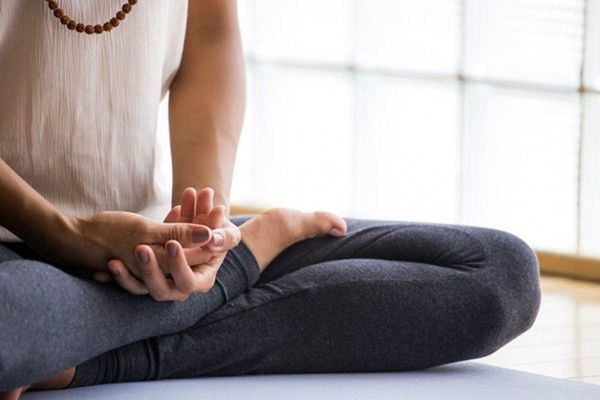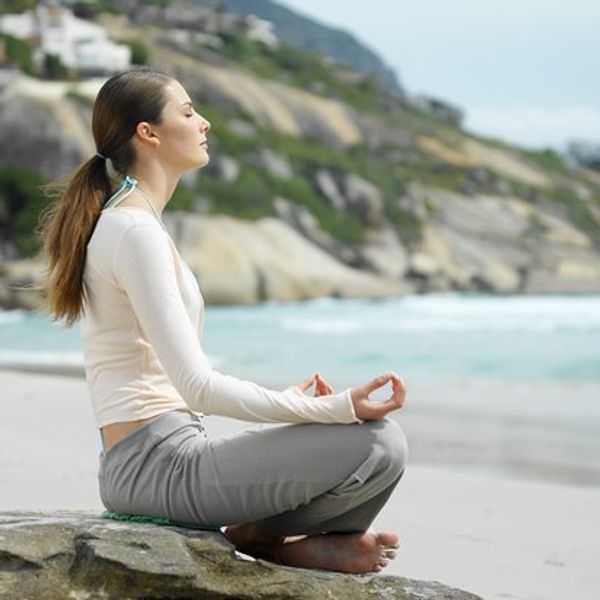Yes. And, no.
I run and I meditate. The two activities serve connected, yet slightly different purposes. They are complementary. Each can enhance the other. Both may be mindful practices. Yet, they are not equivalent. Running gets me out of my head. Meditation gets inside my head and has a look. As a team, they are a fantastic health duo.
These are the ways running gets me out of my head. We sweat out blocked toxins. Whatever we are ruminating about, whatever our perseverations, the physical engagement forces us to refocus. Our minds can float more than usual. Stuck thoughts loosen. Our attention shifts just enough to grant a reprieve from our anxieties. Better still, that more open mind space may yield new insights. I am often surprised and delighted by the ideas that pop up on a run. Running is one of the best ways to sluice failures, looming challenges, and other emotional distresses through the body. The bonus is that you just might find the solution to a nagging problem.
Running is also great opportunity to practice mindfulness. Moving our bodies in any way offers a chance to check in on how we feel physically, mentally and emotionally; to notice our breath; and to pay special attention to our surroundings. Because, whether we are conscious of it or not, our bodies and minds are in constant communication. They are not separate mechanisms that speak to each other sporadically. In Western culture, we tend to think that our bodies serve our brains. That’s sort of true. Our brains also serve our bodies. Really, our bodies and minds are one, inextricably integrated system that creates us, supports us and enables us to be. Neuroscientists and psychologists have started teaming up to study what they call, “interoception.” This is the process by which we sense our bodies from within. If we start to listen in on the constant conversation between our bodies and brains, we learn a lot about ourselves. This listening, this noticing (as the mindfulness community calls it) is an excellent example of how we practice mindfulness. To be mindful is to have both intention and attention—we decide to notice.
Here are two particular mindfulness practices I do when I run:
- I count my steps in an ascending cycle from five to 10 and then start again. I count five steps. Then I count six steps. Then seven. Then eight, nine and 10. Then I return to five and begin the same sequential counts again. I notice how the foot that leads the count changes with every second number. Five and six the same foot hits the ground. Then my opposite foot hits the ground on seven and eight.
- This one I do when I’m running uphill. I count my breaths up to 10 and then begin again. I notice that when I focus on the count, my breathing eases, which often has the magical effect of speeding up my pace.
Some days my focus is slippery. I can’t make it more than one or two rounds before I lose count and have to start again. No surprise, my breath is more strained. I run slower. My workout feels longer. Those are the days I have more on my mind. Or the days I’m tired. So, I notice my racing mind and my tired body, and use the run to get out of my head. Because, in the end, while running can be deeply mindful—after all, we are absorbed in the business of moving at a brisker pace than normal through an environment—what running does best is help us transcend our worries, if only for the time we are in motion. It is simply not possible to get inside our minds as deeply as we can in a meditation, though mindful running prepares us for the more profound focus of sitting on the cushion.
Meditation is a mindfulness practice, too, of course. But a seated or slow-walking meditation practice is quite different from mindful running. Meditation is not about emptying our minds and Zen-ing out. We meditate by sitting with our thoughts. We become acutely aware of our state of mind. We feel inside our body-mind with deep attention. We notice and let it all be. This is the grace of meditation, the opportunity to observe how tightly we are holding onto our sources of both suffering and happiness. We notice how hard it is to let our thoughts be, to let them swim in and out of our consciousness. We want to grab each thought and control it, hanging onto happy memories or rehashing unpleasant events. Some days, meditation is like floating on our own personal cloud. But often, meditation is hard, uncomfortable, even unbearable. There’s no escape into sweat (or music, or podcasts, or the goal of an upcoming race—topics I couldn’t get to here) as with running. Either way, meditation is beneficial. The practice is a much-needed pause in the midst of the high-speed, competitive sprint of our world. A pause that enables us to take stock of where we are and what matters. For one, our health matters, so meditation will fortify our running practice.
Meditation exercises our pause-muscles, our ability to think before we react. Running exercises our muscle-muscles and can be done in a mindful fashion. Both are excellent for our health. Don’t have time to run and meditate? Shorten your run five minutes and take five minutes to meditate. Or shorten your meditation five minutes, and run around the block. While each of them is powerful wellness tool, together they add up to more than their sum.
MINA SAMUELS is a writer, playwright and performer, and in a previous incarnation, a litigation lawyer and human rights advocate. Her books include, "Run Like A Girl 365 Days: A Practical, Personal, Inspirational Guide for Women Athletes" (Skyhorse Press; June 2019), "Run Like a Girl: How Strong Women Make Happy Lives" (for which she appeared on The Today Show); a novel, The Queen of Cups; and The Think Big Manifesto, co-authored with Michael Port.







